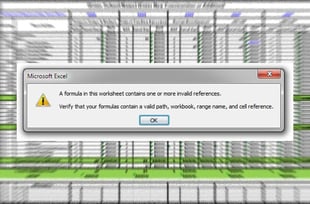Removing Silos of Preconstruction Information
You’ve probably heard the phrase before: silos of information. It’s an all-too-familiar problem in the world of preconstruction, and it impacts a preconstruction team at every level. When you aren’t able to access the data that you need, you can face issues with aligning expectations, turning around estimates in time to meet owner deadlines, and even employee retention. It’s difficult to have company-wide standards, processes, or new hire training if only one person has the keys to the castle.
One of the most common causes of entrenched silos of information lies with outdated construction estimating software that doesn’t allow for easy communication and collaboration. You have someone using Excel, another performing takeoff in OST, and still, another using a combination of spreadsheets and a woefully lacking construction estimating software like MC2—which is no longer even actively updated.
Sounds a little crazy, right? But these are the odds that most estimators are up against. Some people do things this way while others do it that way, and the resulting data gets lost in the shuffle, often to the point that not even those who generated it know where it exists anymore.
 Collaboration is key to cutting down barriers to information in preconstruction.
Collaboration is key to cutting down barriers to information in preconstruction.This has huge ramifications for the success of a preconstruction team. Without accessibility and communication, errors can start to multiply on top of each other. You waste time trying to find data; then, if you do find what you need, you might waste more time correcting it, because if it isn’t automated there’s a higher chance of mistakes.
You lose resources without the ability to build up an easily accessible cost database. You lose people without standards, clear processes, and robust training. Worst of all, you may even start losing projects to competitors who are already ahead of the curve.
So, what’s the solution? How can estimators start breaking down these silos of information and give themselves more time, more resources, and more wins? Beck Technology decided to host a gathering of preconstruction professionals to brainstorm an answer.
Adopt a construction estimating software that meets your needs and can “grow” alongside you.
The overwhelming feedback we heard was that not being able to speak the same estimating “language,” or using all different kinds of methods and construction estimating software to build out an estimate, really made it difficult to overcome silos of information—and oftentimes created them if they weren’t already there. Understandably, not being on the same page makes collaboration within one team—much less multiple ones in different offices—next to impossible.
Moving to one centralized construction estimating platform, makes it easier for estimators to communicate with each other and update estimates faster. For example, with Beck Technology’s DESTINI Estimator, multiple users can work on the same estimate at the same time and see real-time updates.
Ensure that there is a database everyone can access.
Although most companies have a cost history database established, the maintenance and location of this database and its relevant files often get delegated to just one or two people. This can quickly create bottlenecks and gaps within the database.
By having a centralized cost database that all estimators on a preconstruction team are able to access and add information to at any time, it becomes that much easier to start introducing time-saving measures like estimate templates and data analysis. What does this mean for estimators? They can start making better decisions earlier.
Give and get feedback.
While having the best preconstruction estimating software is certainly a huge step in the right direction, it’s just as important to remember that collaboration isn’t just fancy tools and cutting-edge technology. It’s also old-fashioned reaching out and leaning in.
Inviting key subs, such as structure, façade, and MEPs, to come to the office and have face-to-face meetings reduces misunderstandings and helps establish a better working relationship. Additionally, it is helpful for general contractors to provide feedback to subs after a project is awarded—giving them details as to where they were off and why they weren’t selected can help them become a better sub.

-1.png?width=112&height=112&name=image%20(4)-1.png)















